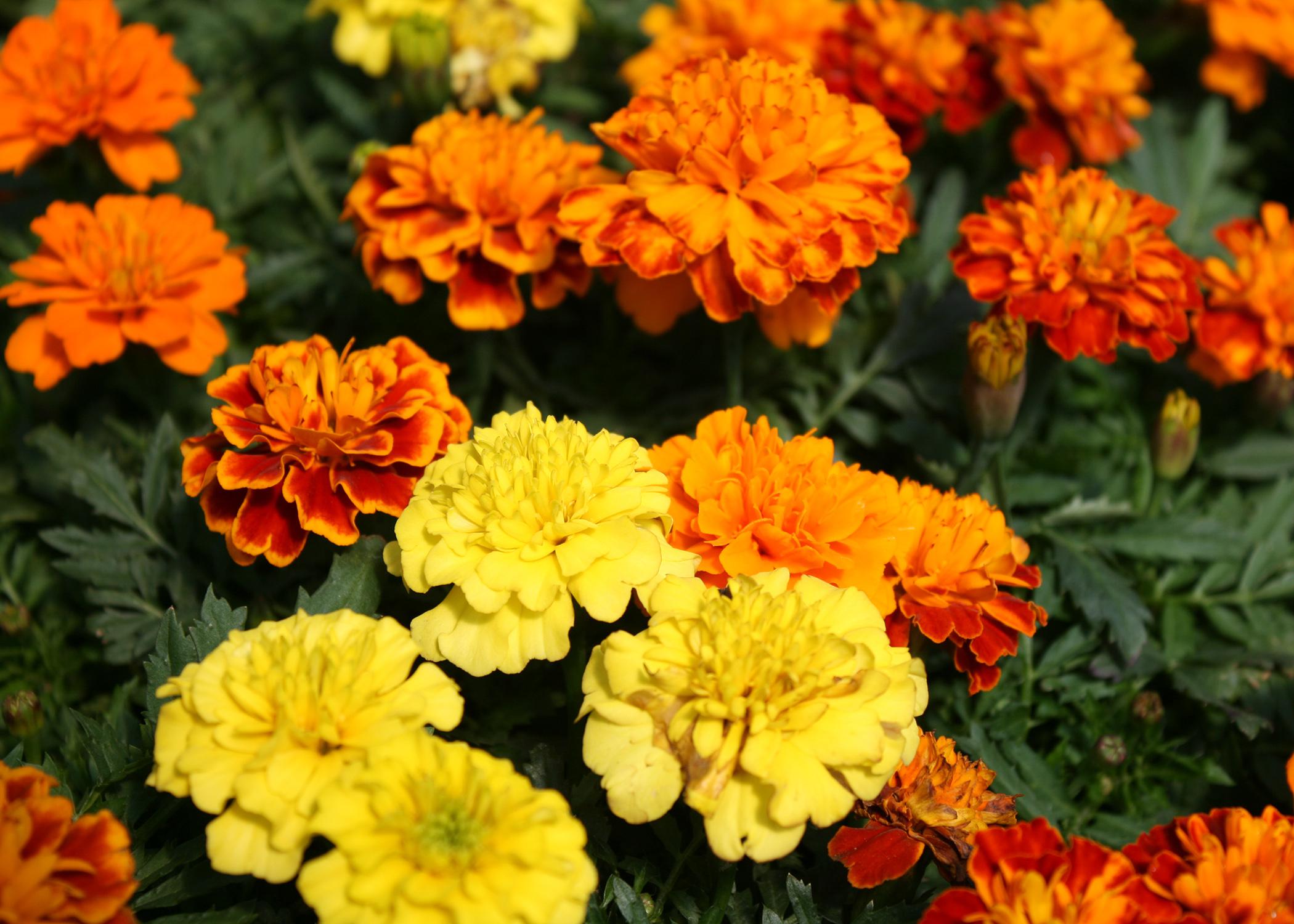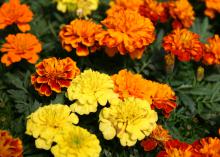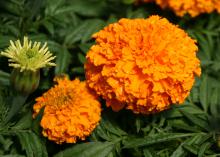Information Possibly Outdated
The information presented on this page was originally released on September 9, 2013. It may not be outdated, but please search our site for more current information. If you plan to quote or reference this information in a publication, please check with the Extension specialist or author before proceeding.
Plant mari-mums in fall gardens for color
You may be familiar with the saying, “What was old is new again,” as related to clothing and decorating styles, but it’s also true of the landscape.
While fall-flowering mums seem to attract the most attention for fall color, there is a “brand new” plant called the mari-mum being promoted for the fall garden and landscape across the Southeast. Have the plant breeders been working overtime? Actually, a mari-mum is simply a fall-planted marigold.
Marigolds are an old standby for me in the spring and summer, but over time, I had completely forgotten how effective these flowering annuals can be in the fall. And why can’t they be successful then? Marigold colors are earthy and warm, just like the flowering mums. Their orange, yellow, red and gold colors are outstanding in any harvest display.
There are several types available, but the big two are the American and the French marigold.
The American marigold is also called the African marigold, and various series range from 15 inches to more than 3 feet tall. American marigolds are recognizable for their double flowers shaped like pom-poms. Popular series include the First Lady, Discovery and Inca II. These series feature colors of yellow, orange, dark, orange and white.
American marigolds sometimes need staking because of their big flowers and tall stems. An outstanding newer series is the All-America Selection Moonsong Deep Orange, which has flowers up to 3 ½ inches across.
French marigolds are smaller and have more flower variety. There are single and double flowers, and they come in yellow, orange and red. Some even have stripes. Popular series include Bonanza, Janie and Sophia. French marigolds are generally less than 15 inches tall. Marigolds are free flowering from early summer to frost if you deadhead and remove the faded flowers.
Always prepare planting beds in full sun and work in good-quality compost. This step improves the soil’s water-holding capacity and keeps it consistently moist. Since the fall season is relatively short, sprinkle a 3- to 4-month, controlled-release fertilizer at planting.
One advantage of planting marigolds in the fall is that they reduce the incidence of spider mites, which can be troublesome in the hot, summer months. The mites may be present in the cooler fall season, especially if we have drought conditions, but their reproductive rate will be greatly reduced.
I think you will find mari-mums are good companions for the other cool-season colors we are planting at this time. Try them planted in combination with the colorful flowers of violas, pansies or Sonnet snapdragons. Or interplant with cool-season foliage like ornamental Pigeon cabbage or the dark burgundy red foliage of Redbor kale.
So, keep the fall-flowering mums in big containers on the porch and patio, but plant mari-mums in your landscape beds to celebrate the harvest season.









